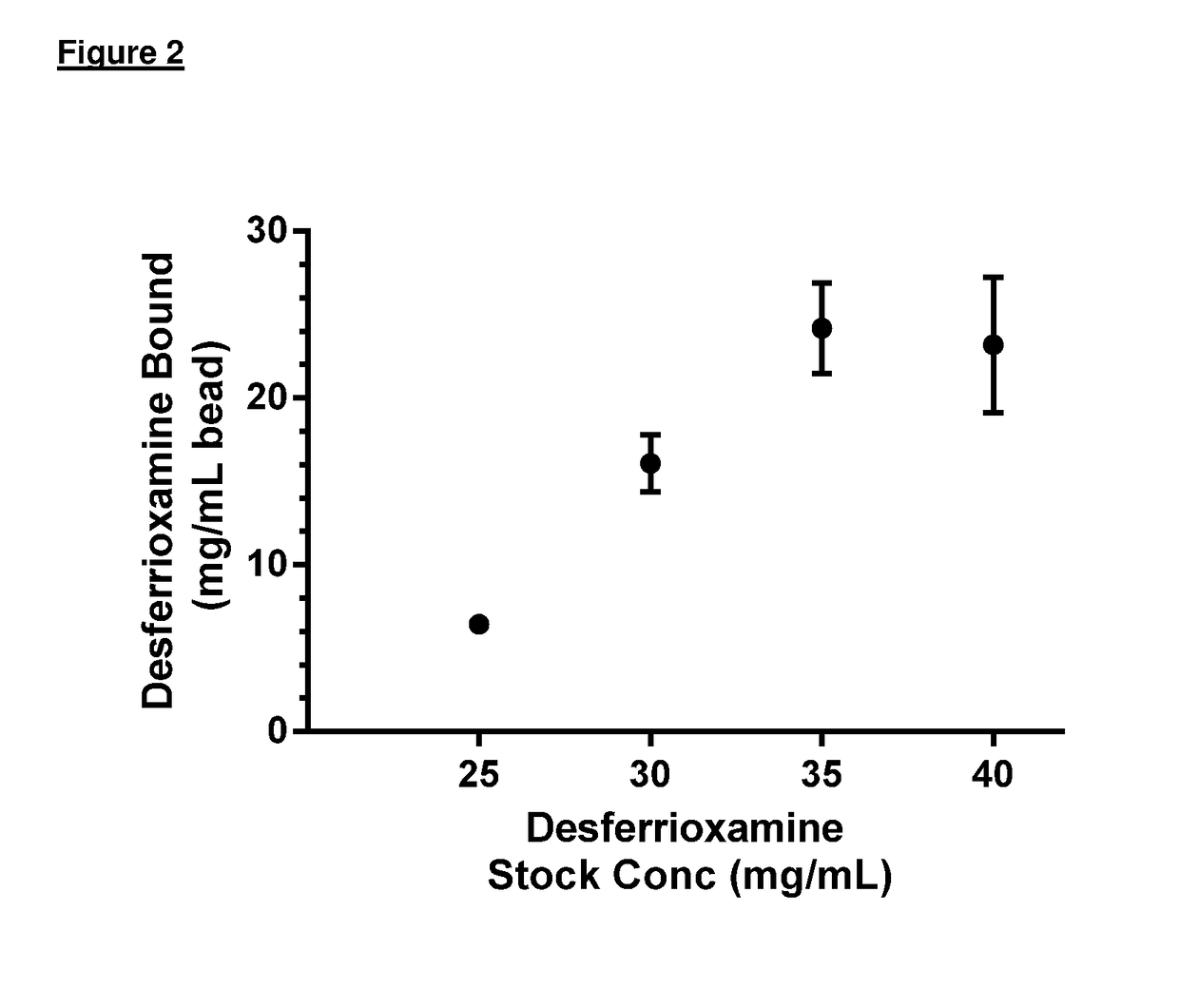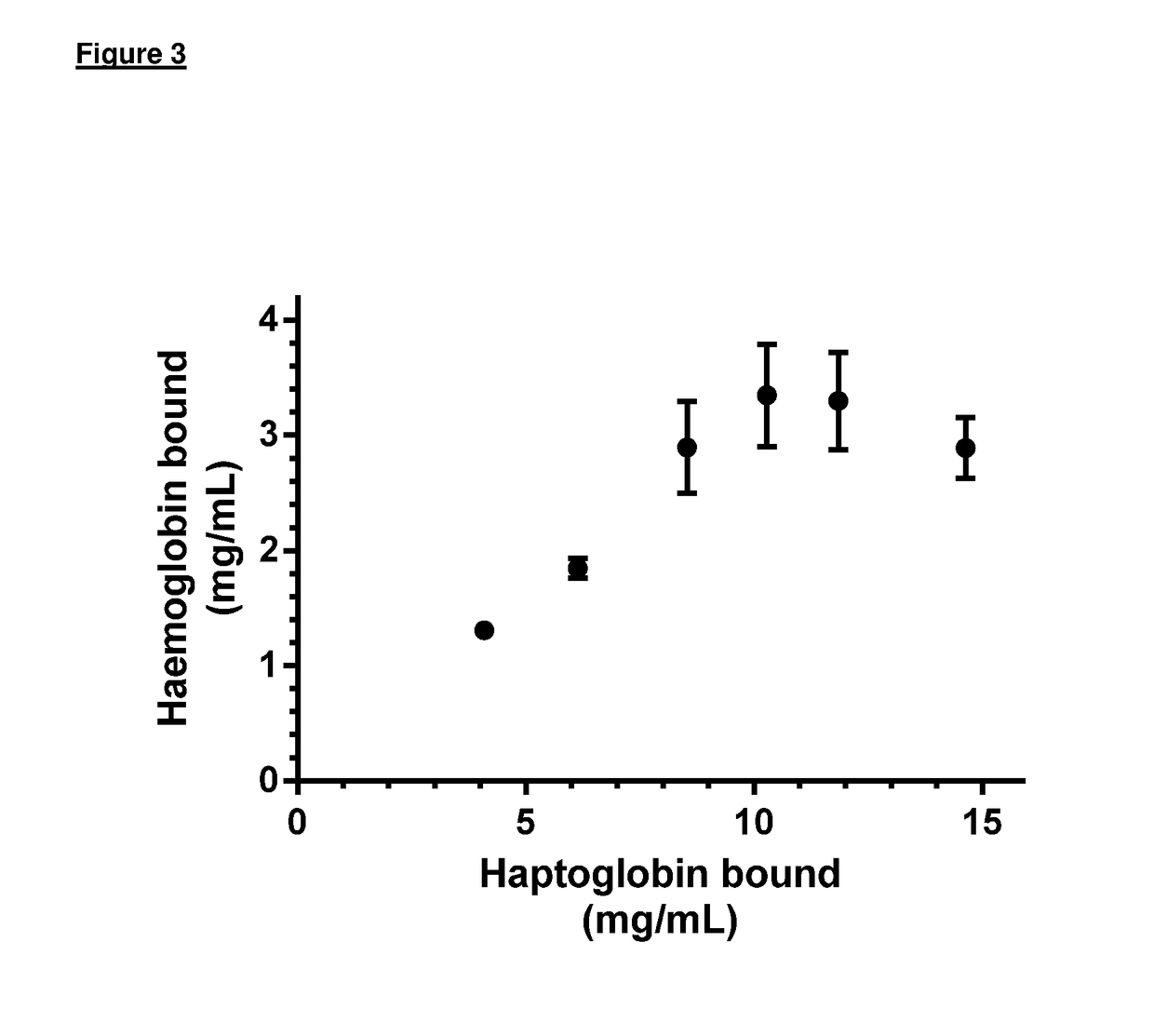Blood filter
a filter and blood technology, applied in the field of blood filters, can solve the problems of organ dysfunction associated with critical illness and mortality, pro-inflammatory response, iron-catalysed oxidative damage, etc., and achieve the effects of improving haemolysis, increasing the amount of haemolysis-derived components, and improving haemolysis
- Summary
- Abstract
- Description
- Claims
- Application Information
AI Technical Summary
Benefits of technology
Problems solved by technology
Method used
Image
Examples
example 1
Immobilisation of Binding Agents
[0098]A haemoglobin (Hb)-binding molecule (haptoglobin), a haem-binding molecule (human serum albumin (HSA), and an iron-chelating molecule (desferrioxamine (DFO)) were bound to agarose beads in three separate batches, such that any one bead is bound only to one of haptoglobin, HSA and DFO. Each binding agent was bound to the beads using the following reaction scheme:
[0099]In this reaction scheme, the agarose beads comprise an activated N-hydroxysuccinimidil ester at the end of a 10-atom spacer. The binding agents are then immobilised on the beads by means of a substitution reaction between a primary amine on the binding agent and the N-hydroxysuccinimidil leaving group.
[0100]Maximal loading of each bead each binding agent was determined to be: HSA—22.23 mg of HSA / ml of beads; DFO—24.2 mg of DFO / ml of beads; haptoglobin (Hp)—10.3 mg of Hp / ml of beads.
[0101]The respective functionalised beads were demonstrated to pull each of the haemolysis-derived com...
example 2
Time Course of Stored RBCs
Materials and Methods
Isolation and Storage
[0103]Whole blood (450 mL±10%) was collected from a single healthy volunteer into a blood bag (Fernesus) containing CPDA-1 anticoagulant (63 mL). After separation of plasma by centrifugation (10 min, 2000×g), the sample was leukodepleted, after which plasma was reintroduced (17% of total volume). At this stage, the RBCs were divided into individual wells (4.1 mL in each, vide infra), to which 2.9 mL of an additive solution (either 10 mM isotonic citrate-phosphate buffer, or AS-3—both pH 5.8) were added to make a final volume of 7 mL. Functionalised beads (beads to which haptoglobin, HSA and DFO had been bound), and control beads (without any binding agents) were added according to the following scheme in Table 1. Plates were prepared in triplicate. The functionalised beads were a mixture of haptoglobin-, HSA- and DFO-functionalised beads in the proportions 80%, 15%, and 5% respectively.
[0104]The plates were incubate...
PUM
| Property | Measurement | Unit |
|---|---|---|
| Fraction | aaaaa | aaaaa |
| Fraction | aaaaa | aaaaa |
| Fraction | aaaaa | aaaaa |
Abstract
Description
Claims
Application Information
 Login to View More
Login to View More - Generate Ideas
- Intellectual Property
- Life Sciences
- Materials
- Tech Scout
- Unparalleled Data Quality
- Higher Quality Content
- 60% Fewer Hallucinations
Browse by: Latest US Patents, China's latest patents, Technical Efficacy Thesaurus, Application Domain, Technology Topic, Popular Technical Reports.
© 2025 PatSnap. All rights reserved.Legal|Privacy policy|Modern Slavery Act Transparency Statement|Sitemap|About US| Contact US: help@patsnap.com



